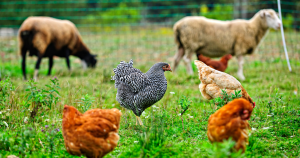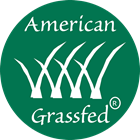In today’s conscientious consumer landscape, there’s a heightened emphasis on understanding the origins of our food, the ecological footprint of agriculture, and the welfare of animals. This consciousness has fueled a substantial increase in the demand for grassfed products—a movement towards healthier, more sustainable dietary choices.
However, to ensure that products labeled as “grassfed” adhere to stringent standards, a reliable certification process is imperative. Grassfed certification serves as a beacon of transparency and quality in the agricultural sector.
Understanding Grassfed Certification Standards
Grassfed certification standards encompass a set of stringent criteria established to ensure that animals are raised in a manner that aligns with natural behaviors, promotes their health, and upholds environmental sustainability. These standards encompass various facets of animal husbandry, nutrition, and environmental stewardship.
Diet Requirements
- Grass and Forage-Based Diet: Animals must primarily consume a diet of grass and forage throughout their lives, with exceptions for milk consumption before weaning. This ensures that the animals receive nutrition from natural sources, mimicking their evolutionary diet.
- Access to Pasture: Animals must have continuous access to pasture during the growing season, enabling them to graze and forage as part of their natural behavior. Pasture access promotes exercise, sunlight exposure, and diverse nutrient intake.
Prohibition of Antibiotics and Hormones
- Restricted Use: The Grassfed certification prohibits the use of hormones in animal feed or management practices. This standard ensures that animals are not given unnecessary medications or growth-promoting substances.
Animal Welfare
- Ethical Treatment: Certified grassfed operations adhere to high standards of animal welfare, prioritizing humane handling practices, adequate living conditions, and access to shelter and clean water.
- No Confinement: Animals are not confined to feedlots or intensive housing systems, allowing them freedom of movement and the opportunity to express natural behaviors.
Environmental Stewardship
- Sustainable Grazing Practices: Grassfed certification encourages sustainable pasture management techniques that promote soil health, water conservation, and biodiversity.
- Reduced Environmental Impact: Certified operations aim to minimize environmental impact by implementing practices such as rotational grazing, which improves soil fertility, reduces erosion, and mitigates greenhouse gas emissions.

Why Certification Standards Matter
For Consumers:
- Trust and Transparency: Certification provides tangible assurance that the product meets specific, rigorously defined standards.
- Health Benefits: Grassfed products often boast higher levels of key nutrients like omega-3 fatty acids and antioxidants.
- Environmental Impact: Adhering to grass fed standards promotes soil health, biodiversity, and reduces greenhouse gas emissions.
For Producers:
- Market Differentiation: Certification assists farmers and ranchers in setting their products apart in a competitive market.
- Premium Pricing: Certified grassfed products typically command higher prices, reflecting their quality and the sustainable farming practices involved.
- Community and Support: Achieving certification often involves joining a community of like-minded producers, providing valuable support and resources.
The Role of Grassfed Certification Standards in Promoting Quality
Quality extends beyond taste—it encompasses nutritional content, the absence of harmful additives, and ethical treatment of animals. Certification programs establish standards that ensure animals are raised in a manner that aligns with their natural behaviors and promotes their overall health, directly influencing the quality of the final product.
Ensuring Environmental Sustainability
Grassfed farming inherently promotes sustainability, but certification standards further elevate these practices by addressing pasture management, water usage, and biodiversity. Our Land Health Module specifically addresses these areas to ensure thorough care and improvement of land health. This not only safeguards our planet but also ensures the land remains productive for future generations.
Challenges and Solutions in Grassfed Certification
Despite its benefits, obtaining grassfed certification poses challenges such as certification costs, infrastructure requirements, and meticulous documentation. The American Grassfed Association (AGA) understands that farmers may struggle with these costs. To address this, AGA keeps its fees reasonable and offers resources to simplify record-keeping. Furthermore, our standards are developed by and for producers, ensuring they are practical and achievable. These efforts make certification more accessible and support farmers in overcoming these obstacles.
The Future of Grassfed Certification Standards
With increasing consumer demand for transparent and ethical food choices, the importance of grassfed certification will only amplify. This will likely lead to more stringent standards, improved enforcement, and innovative farming practices that enhance sustainability and animal welfare.
Evolving Standards and Technologies
Emerging technologies show promise in enhancing the transparency and traceability of the certification process. These advancements could help bridge the gap between consumers and producers, fostering a greater appreciation for the value of grassfed products.

Conclusion
Grassfed certification stands as a testament to the growing consumer and producer consciousness regarding the impact of food choices on health and the planet.
The American Grassfed Association plays a pivotal role in this movement, offering certification that consumers can trust and producers can be proud of.
To delve deeper into grassfed certification standards and make a difference, consider reaching out to the American Grassfed Association. Together, we can pave the way for a future where every bite supports a healthier, more sustainable world.
